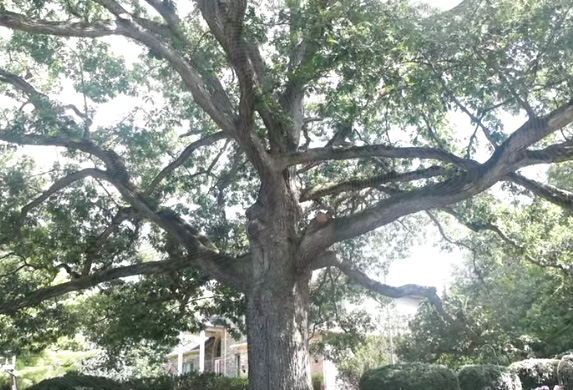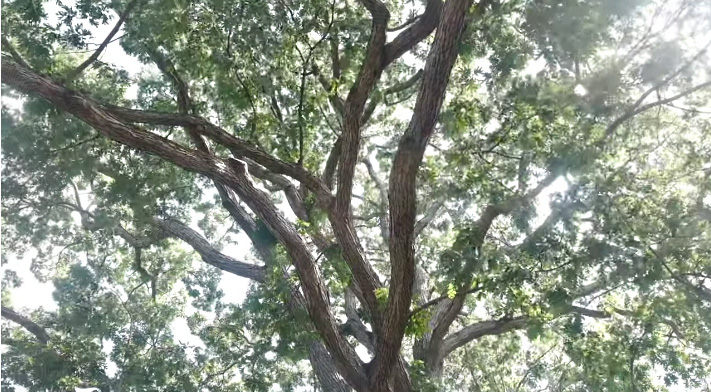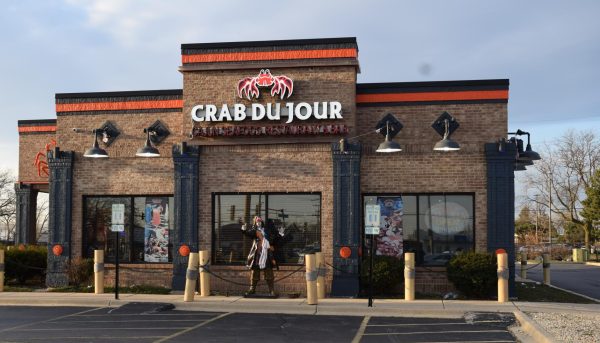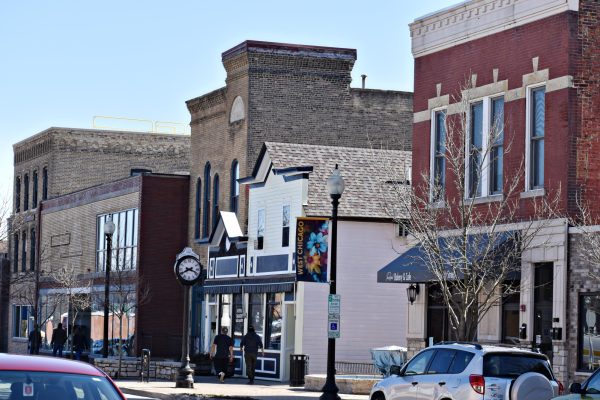West Chicago home to 400-year-old oak tree
This ancient oak is located near St. Andrews Golf Course in West Chicago. (Photo by The Conservation Foundation; used with permission)
November 30, 2022
In 2022, an old oak tree celebrated what may have been its four-hundredth birthday in West Chicago.
Whether the tree on Woodland Ave. is actually 400 years old has not been fully determined, but experts do believe the oak is more than 300 years old. The tree has stood in West Chicago since the 1650s-1680s, and while most oak trees in the area are slowly perishing, this one remains healthier than ever thanks to the neighborhood that surrounds it. The owner, Bob Cago, not only takes care of the tree, but also called upon the Conservation Foundation to look in on the oak.
“This tree will outlive us all,” said Jim Kleinwatcher of the Conservation Foundation.
“It’s not the oldest tree, but it’s very rare because it has grown ‘unforested’. Most trees long, long ago were part of a forest. This particular [one] is that old, but shows no signs of being in a forest. Its branches have grown at will with no struggles for 300+ years,” said Cago via email.
Cago’s grandfather bought the property on Woodland Ave. in 1947, “specifically because of this oak tree. There was a sister tree nearby and a similar oak that was not as beautiful, but maybe older. That tree blew 9ver in the early nineties and the sister tree blew over in a microburst in 2005, but his prized oak still stood. He passed away in 1981, but the family is still here.”
While a neighboring property was actually used as a barracks during and post-World War II, “it’s safe to assume that this place was a well kept homestead or farmland during that time,” said Cago.
The tree’s longevity is a testament to the care it has received and even more notable considering oak trees around America have been slowly dying. Young oaks have not replaced those that have perished, which has proved problematic, as animals all around the world need oak trees to live. Oaks are their source of food and shelter.
The Conservation Foundation first published a video about Cago’s tree in October. The organization celebrated the tree’s longevity, but also issued a call for help as it tries to keep these oak trees standing.
According to Kleinwatcher, “only seventeen percent of oak trees are still standing” in the United States.
The Conservation Foundation asks that community members try to keep oak trees alive by providing the appropriate environment for the trees: grass around trees does not work well, and so homeowners must create an area where they can focus on growth.

Cago has been involved in a move recently, which has hindered his opportunities to document the tree’s growth. Nonetheless, he is committed to preserving the oak.
“We recently had a company cut out the dead wood for the first time in the tree’s history. This year, it really flourished. It drops so many acorns each year, and I’m trying to find people to nurture them and keep the tree’s offspring to grow,” said Cago.
Cago’s mother, who lives in Warrenville, has an acorn from Cago’s tree that dropped in 1977, and continues to thrive.
Oak trees affect the environment in a positive way; when they are gone because of human cuttings, so goes a number of animals (insects mostly). As such, it is not just the 300-year-old oak that citizens should care about, but all the oak trees, according to Kleinwatcher.
“The more we plant them, they’re not for our generation, they’d be for the next generation, and it’s very important we keep planting oaks,” said Kleinwatcher.















